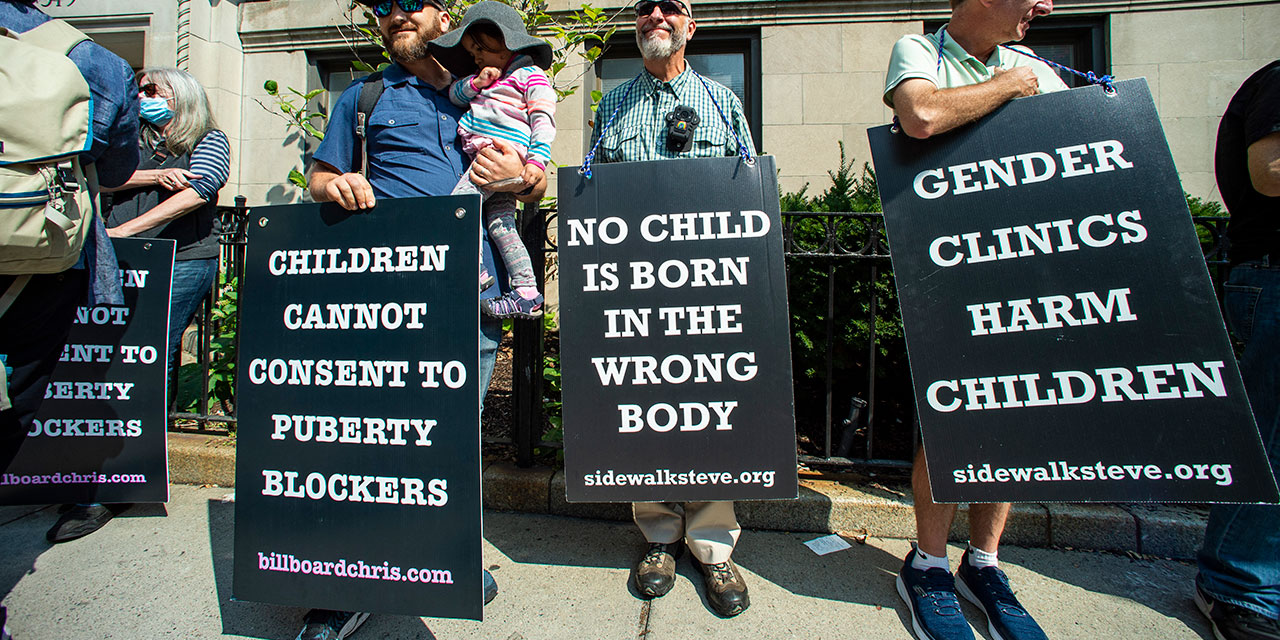Scientific American, which dates to 1845 and touts itself as “the oldest continuously published magazine in the United States,” recently ran an article arguing that scientists should prioritize “reality” over scientific “rigor.” What would make a publication with a name like this one set empirical evidence at odds with reality? Masks, of course.
Naomi Oreskes, a Harvard professor of the history of science, argued that by “prioritizing scientific rigor” in its mask studies, the Cochrane Library may have “misled the public,” such that “the average person could be confused” about the efficacy of masks. Oreskes criticized Cochrane for its “standard . . . methodological procedures,” as Cochrane bases its “findings on randomized controlled trials, often called the ‘gold standard’ of scientific evidence.” Since RCTs haven’t shown that masks work, she writes, “[i]t’s time those standard procedures were changed.”
City Journal contributing editor John Tierney called Cochrane “the world’s largest and most respected organization for evaluating health interventions.” A recent Cochrane review found that “[w]earing masks in the community probably makes little or no difference to the outcome of influenza-like illness (ILI)/COVID-19 like illness”—or “to the outcome of laboratory-confirmed influenza/SARS-CoV-2”—“compared to not wearing masks.” The review also found that “use of a N95/P2 respirators compared to medical/surgical masks probably makes little or no difference” for the “outcome of laboratory‐confirmed influenza infection.”
While Oreskes asserts that Cochrane’s findings were made with “low to moderate” certainty, each of the findings quoted above was made with “moderate certainty,” the second-highest of four certainty classifications. “Moderate certainty,” Cochrane notes, means that “the true effect is likely to be close to the estimate of the effect.” The Cochrane review’s lead author, Oxford’s Tom Jefferson, said of masks in a subsequent interview with Australian investigative journalist Maryanne Demasi, “There is just no evidence that they make any difference. Full stop.”
In response, Oreskes claimed that “[t]he Cochrane finding was not that masking didn’t work but that scientists lacked sufficient evidence of sufficient quality to conclude that they worked.” She continues, “Jefferson erased that distinction, in effect arguing that because the authors couldn’t prove that masks did work, one could say that they didn’t work. That’s just wrong.” But Jefferson didn’t simply say that masks don’t work; he said there’s “no evidence” they work. The burden of proof should be on the side of those advocating a medical intervention. Without remotely having met that burden, Oreskes asserts that masks do work. Cochrane, she writes, “gave the false impression that masking didn’t help.”
In fact, 16 RCTs have tested whether masks effectively reduce the spread of viruses. Not one has found compelling evidence that they do. Two have found statistically significant evidence that masks are counterproductive—that they increase the spread of viruses—probably because masks are frequently moist or dirty, and people often touch them. As for non-RCT evidence, check out this chart by Ian Miller, which shows that mask-mandate and mask-free states registered almost identical Covid-19 case rates.
Surgical masks were designed to protect patients from having open wounds infected by medical personnel, not to prevent the spread of viruses. N95 masks were designed to protect workers from breathing in fumes, smoke, or dust. When N95s were worn in hospitals pre-Covid, it was usually to protect against the spread of tuberculosis bacteria, not to stop the spread of viruses. As an article on the National Institutes of Health website puts it, “Viruses are tiny. . . . Billions can fit on the head of a pin.” Bacteria are huge by comparison: “Bacteria are 10 to 100 times larger than viruses.” Trying to block a virus with a mask is like trying to keep mosquitos out of your yard with a chain-link fence.
Oreskes argues that “Cochrane has made this mistake”—the mistake of basing its findings on medical evidence—“before.” In 2011, a Cochrane review found little evidence that flossing prevents gum disease. Subsequently, the Departments of Agriculture and Health and Human Services struck flossing from their joint dietary guidelines. The Associated Press then reviewed 25 medical studies and came to the same conclusion as Cochrane. According to the New York Times, “the American Academy of Periodontology acknowledged that most of the current evidence fell short,” in part because researchers hadn’t been able to “examine gum health over a significant amount of time.”
Oreskes cites the lack of strong medical evidence supporting flossing to suggest that if one believes in flossing, one must also believe in masks. The differences are profound, however, between the mask debate and any semblance of a flossing debate. First, Cochrane found some statistically significant evidence that flossing works (“There is some evidence . . . that flossing plus toothbrushing reduces gingivitis compared to toothbrushing alone”). That’s more than can be said for masks.
More important, flossing doesn’t require a person to wear an uncomfortable foreign object on his face. Flossing takes a minute, while masks are supposed to be worn for hours. Flossing doesn’t compromise human social interaction or learning in schools, or cause a person to breathe in 35-to-80 times normal levels of carbon dioxide—higher than the levels a person would experience on a Navy submarine. Most important, government officials haven’t mandated flossing.
In a way, Oreskes has provided a public service with her article, as has Scientific American in running it. The article makes clear how willing mask advocates are to sacrifice scientific objectivity on the altar of their newfound religion.
Photo: Dobrila Vignjevic/iStock





